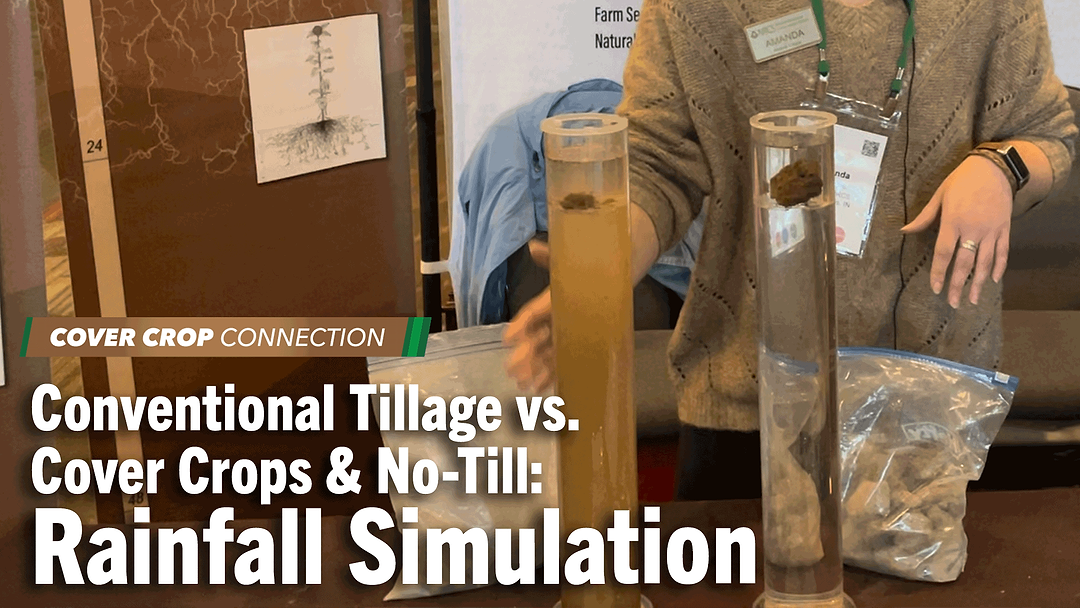At last week’s 32nd Annual National No-Tillage Conference in Indianapolis, I caught up with USDA’s soil health specialist for the state of Indiana, Amanda Kautz. Check out this simulation of a heavy rainfall, and how a conventionally tilled field responds to the rainfall compared to a field with no-till and cover crops.
“So these cutters go out into the field. You take a sample so this is just a smaller version of the 100+ acre field that these were pulled from. Again, conventional system over here, so, tillage with no cover crop, corn/bean rotation. Corn/bean/wheat rotation over here, so we have added a crop for diversity as well as cover crops and no-till. So, this is gonna simulate, again, a rain event. So, we’re gonna take about an inch of water, and pour it on, into these top trays, and it’s going to rain on the samples. And as you can see, this one immediately starts running off. So, it’s running off and carrying soil particles. You can see that water, again, is cloudy with that sediment. This one over here — we do have some runoff — but it again, is clear. And then, if I move this front container, you can actually see that it’s dripping in and infiltrating. So again, that’s gonna be held by the soil or moved down to your groundwater table and actually replenish that and be held there for your crops to have. This also as it dries out, in the conventional system, will seal and crust over, so, it will prevent more water from infiltrating later if we get another rainfall event.”
Stay tuned for more cover crop related live demonstrations from Amanda Kautz in the coming weeks.






Post a comment
Report Abusive Comment